The following notes on Fantasy in Children’s Literature are from lecture by Prof David Beagley, La Trobe University, combined with my own thoughts.
People in the children’s book world ask…’Is it suitable?’ ‘Is it the right age level?’ ‘Is it about a contemporary problem?’ These are important questions, but not of primary importance. The primary question should be ‘Is this a good book?’, or ‘Is this a good writer, writing a good book?’
David Martin
Genre, and talk of genre, irritates the hell out of me, actually. I do not see why something should be the sole type of property of one type of book and not of another. -I’ve got this notion that there’s space to get round anyone’s prejudices, and if you can just think of the right way you can slide round all the nonsense they talk and do something that involves both their Yes and their No. I spend a lot of time before I write a book thinking about this space into which I can slide.
Diana Wynne Jones, in interview with Charles Butler
What happens in a fantasy can be more involving than what happens in life, and thank goodness for that.
Roger Ebert
Ida Rentoul Outhwaite was an Australian illustrator who for a short time was probably the best paid illustrator in the world.
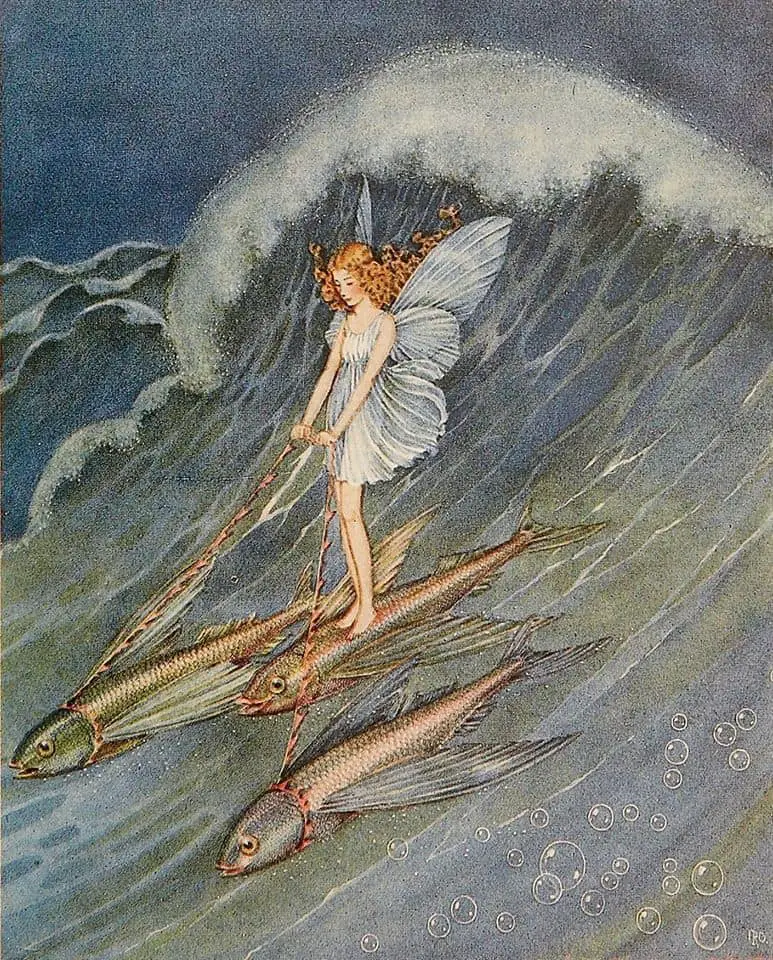
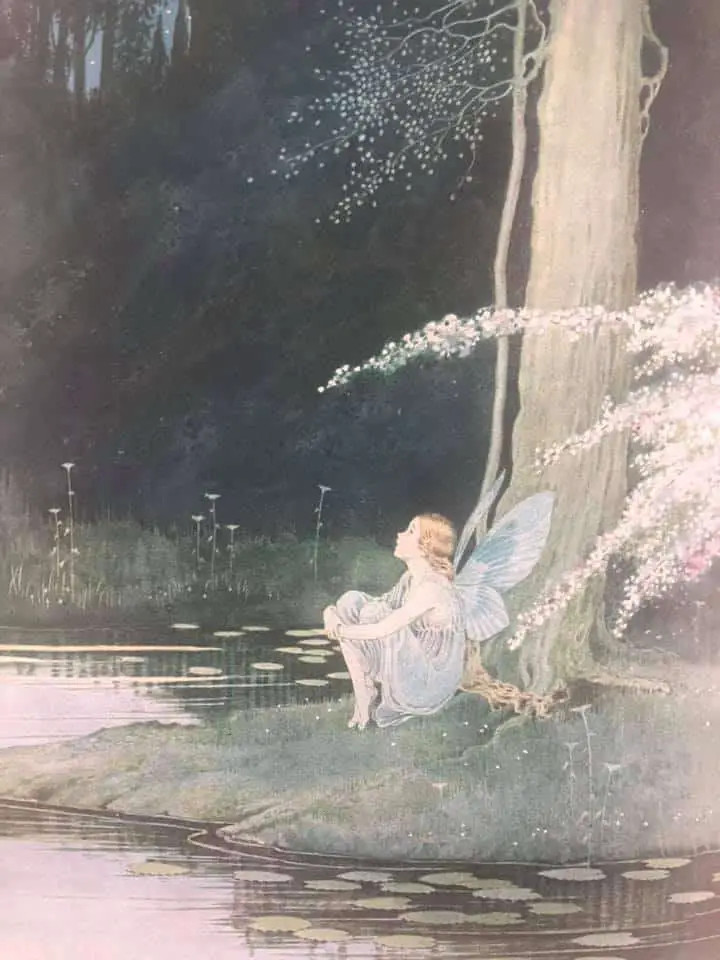
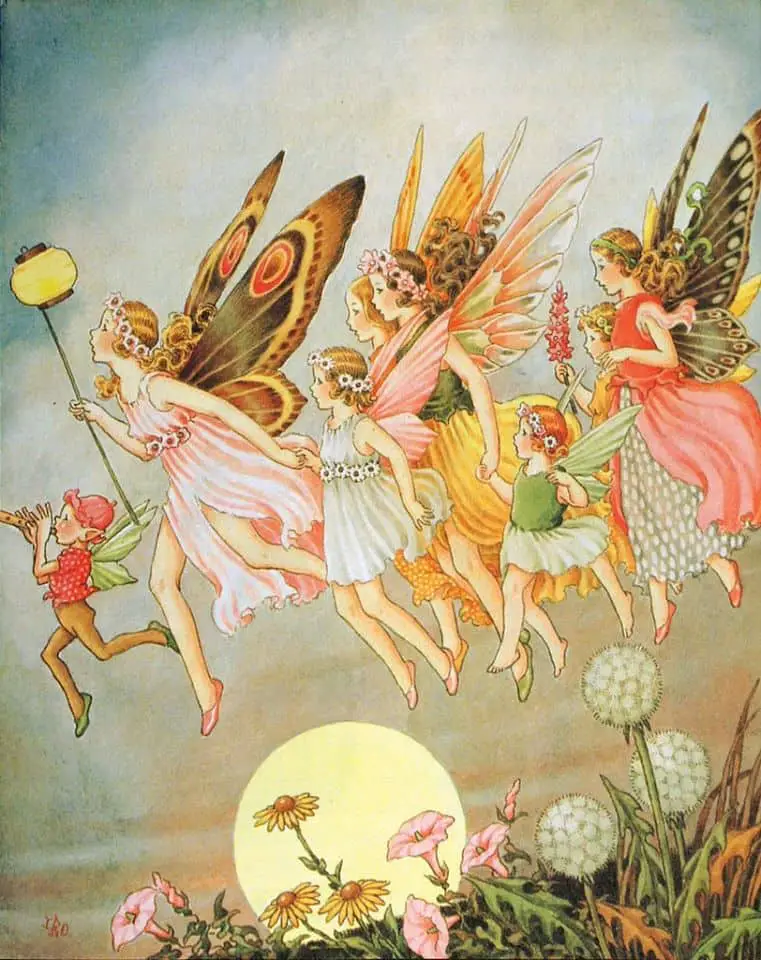
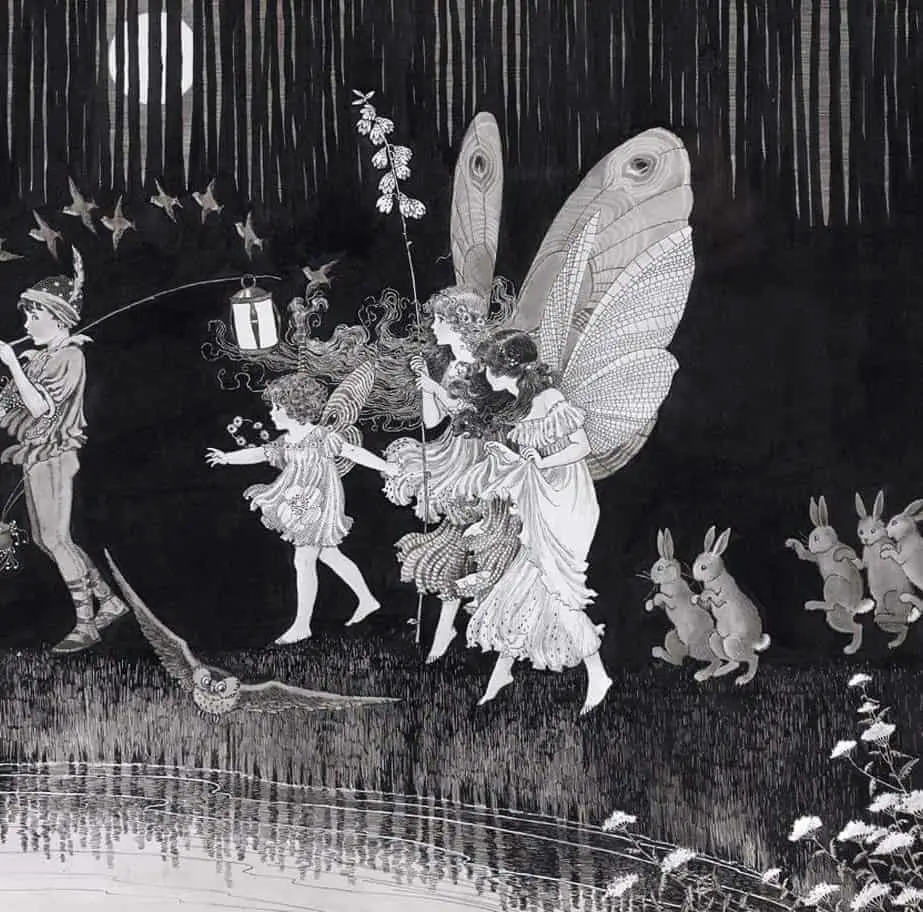
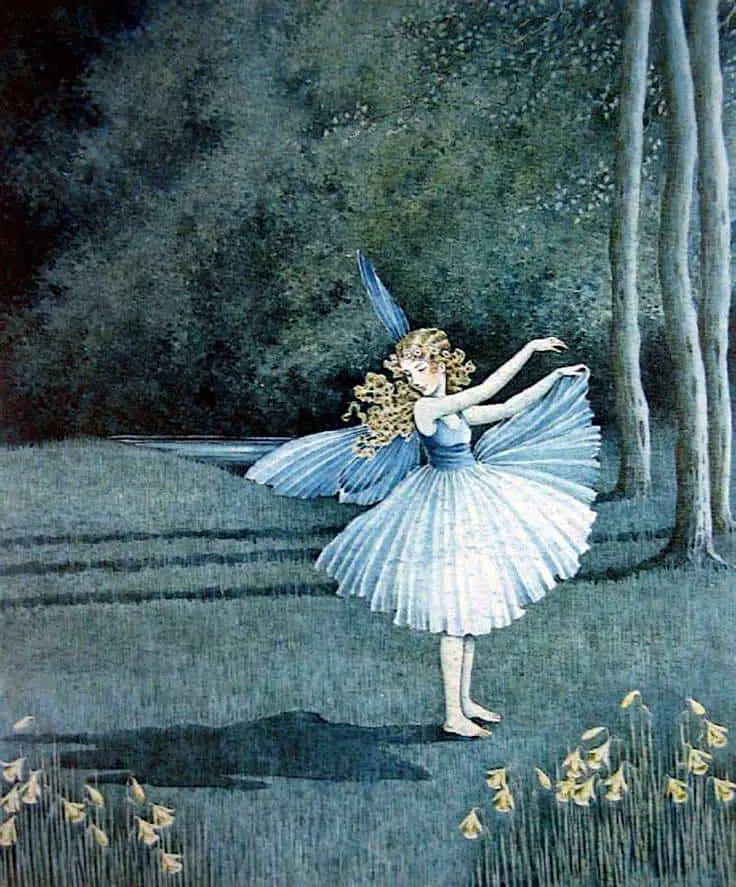
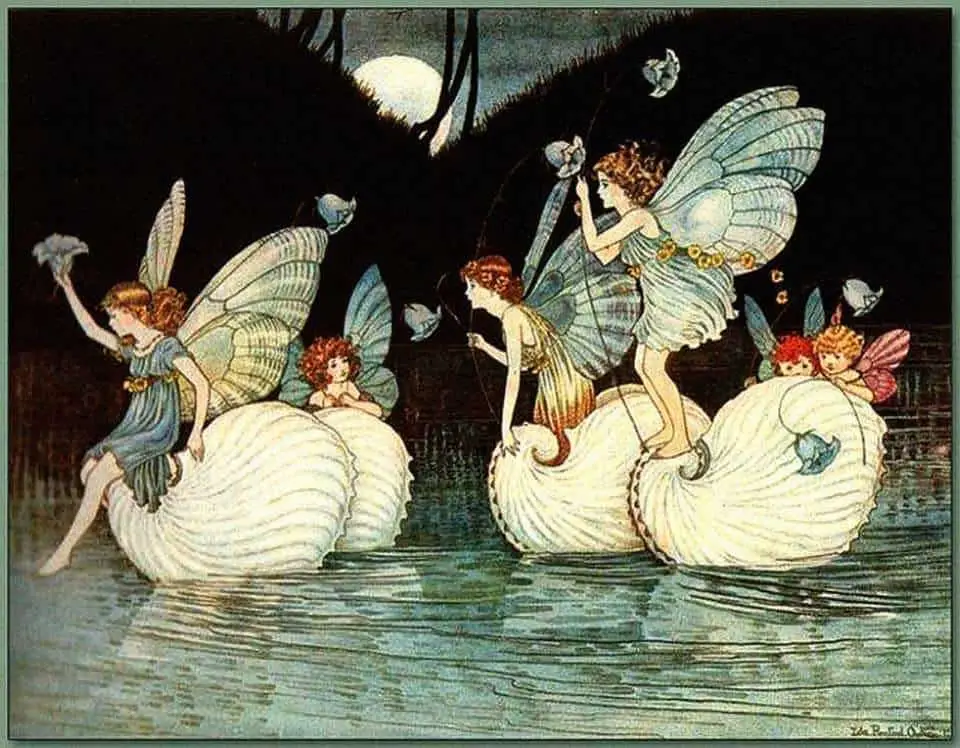
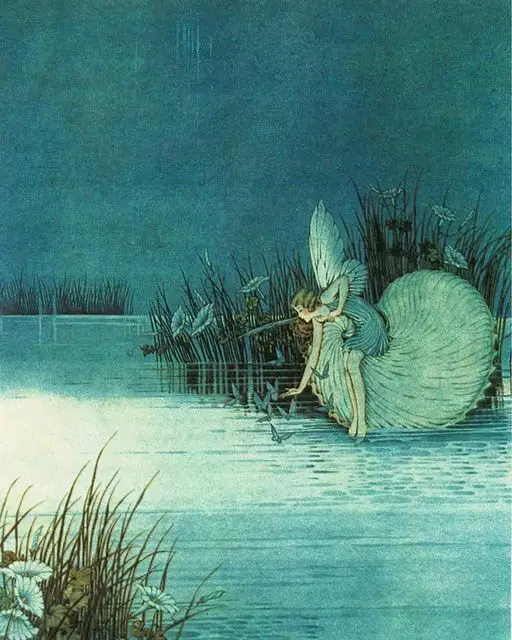
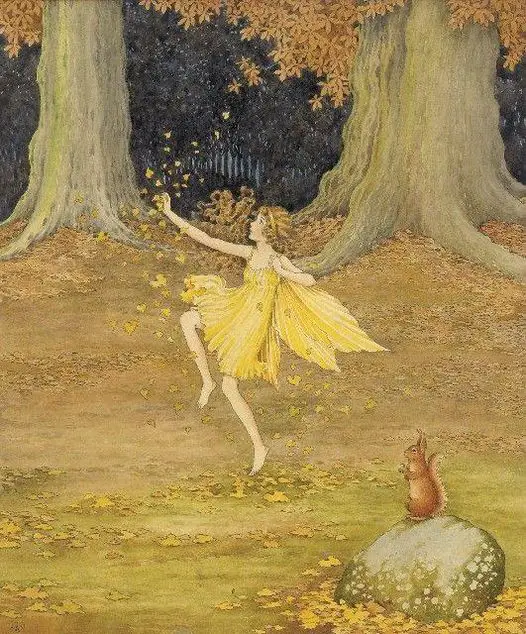
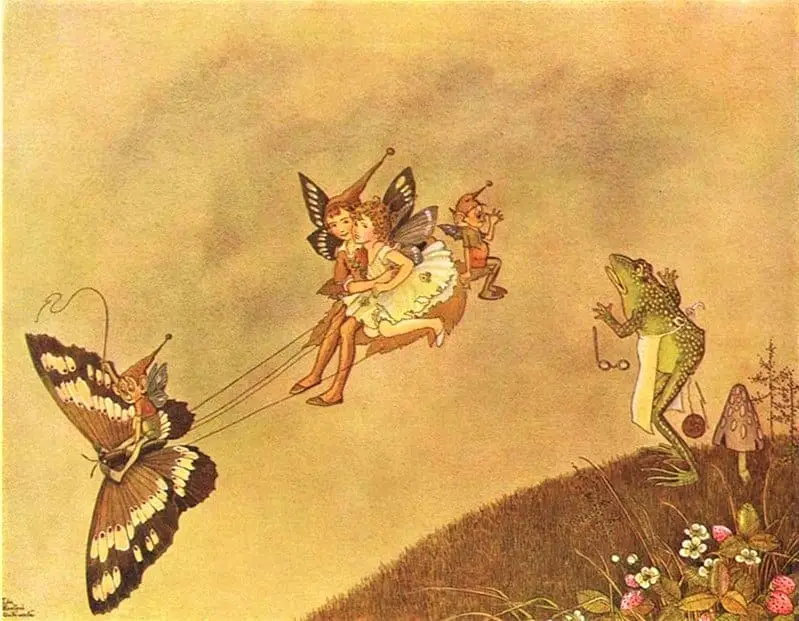
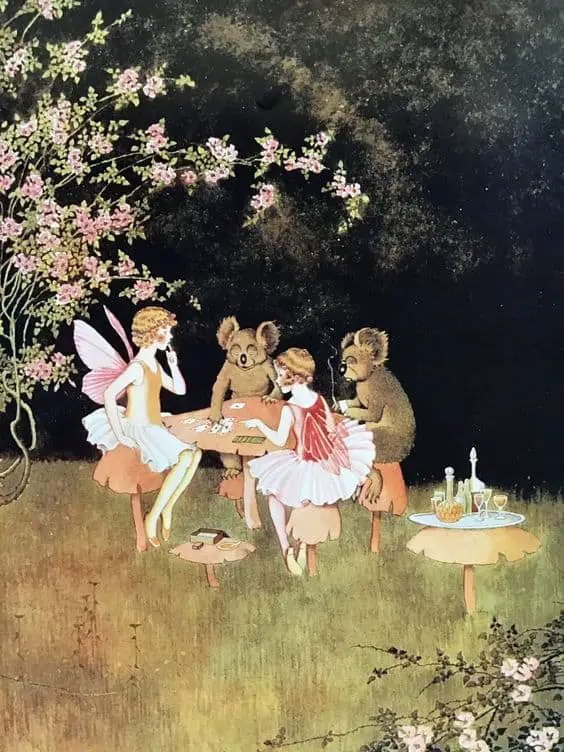
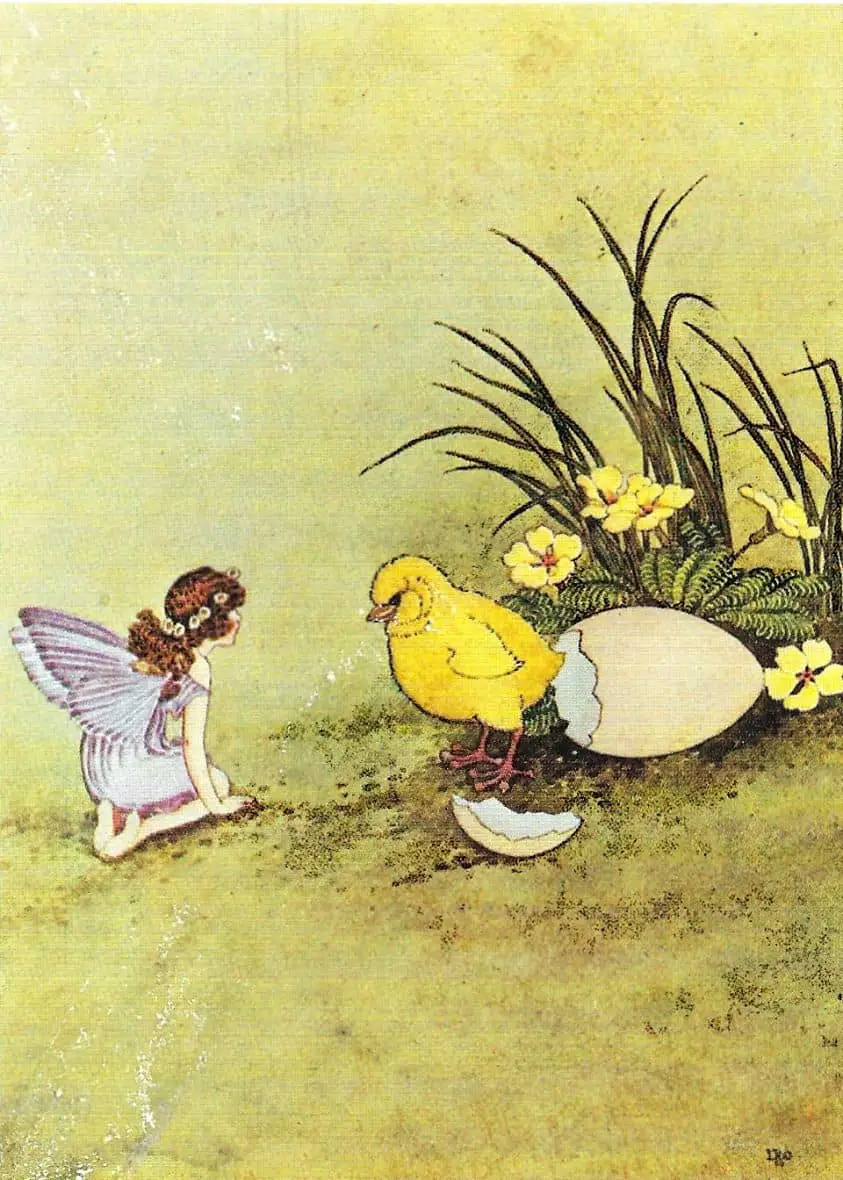
The Cottingley Fairies phenomenon was influential in a resurgence in interest around fairies.
Enid Blyton made use of these tropes — fairies good, goblins bad, small in size, based in nature.
There’s a lot more to fantasy than the greeting card fairy. The secondary world is inextricably linked to the primary world: The secondary world is often a commentary on the primary world, and and offers a different perspective on reality.
Modern fantasy tends to be sequential. Trilogies are preferred (or longer). A lot of the time this is a marketing tool, but there are other reasons. There is now time for the setting to be properly established. The reader truly understands the full world of the story, which may be very different from our world. Second, enthusiastic readers repeat-read (especially young readers). So rather than reading the first Harry Potter fourteen times, they read the entire series twice.
Supplementary reading list for this course: Artemis Fowl. Not a very nice person. A 12-year-old genius super-criminal who wants to set up a worldwide criminal network, but using what he has discovered about the fairy world. The fairy world on the other hand are determined to keep themselves secret to avoid being exploited by humans. So they want to stop Artemis, but after a while Artemis becomes integral to protecting them. (Artemis is the character arc inverse of Walter White from Breaking Bad.)
Rowan of Rin series: Not grand, high-fantasy. Rowan is a little boy who lives in a village like so many other ones: medieval, non-industrialised (why do so many fantasies take place in non-industrial circumstances? — perhaps if those things were present it would be science fiction, not fantasy).
One of Beagley’s favourite authors is Garth Nix, especially his trilogy. (Nix is an Australian author.) Nix has several other series too.
Ursula Le Guin was a US writer. Her Earthsea trilogy was first published in the 70s. But she then thought it wasn’t quite finished.

So she wrote another book to finish it off. The key character has some very interesting opponents, but she felt that after the confrontation she returned with another book to resolve the whole story. [See also: 10 Reasons Why Le Guin’s Earthsea Books Can Still Change Your Life from io9]
The Best YA Novel of All Time? EW Staff Pick: ‘The Earthsea Cycle’ by Ursula K. Le Guin from Entertainment Weekly
Philip Pullman is a well-known British author, especially for his Dark Materials trilogy. Northern Lights in Britain and Australia is The Golden Compass in the United States. Pullman very specifically states that he has written them to attack the Catholic church in particular and Christianity in general. He has a very specific intention in these books. This has generated a lot of heat, naturally. He sees C.S. Lewis and Narnia as the devil he has to destroy — he thinks they’re the worst propaganda to children and he hates C.S. Lewis. In doing so he has written his stories. Interestingly, a significant number of Christian people oppose C.S. Lewis because they don’t think authors should play with the biblical stories. And then Pullman comes along with his anti-Narnia philosophies. (Now Narnia looks a lot better to them.)
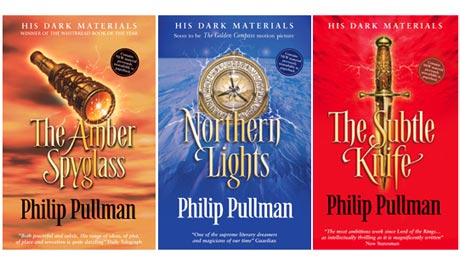
Tamora Pierce: One of Beagley’s favourites. She has created powerful and effective female heroes. It’s so engendered, the idea of hero in our culture. He has to be an alpha male, the white knight on the fiery steed, dripping with testosterone. But Tamora Pierce created characters such as Alana, who is a knight.
Pierce has also created the character of Beka Cooper, who is a dog. (The series is called Provost’s Dog.) Beka turns into a stronger and stronger dog as the series progresses, until finally she is a mastiff. These books are a well-written mixture of crime and fantasy.
Diana Wynne Jones, Anne McCaffrey and Jane Yolen are all modern writers creating good female characters. Yolen tends to write about unicorns and myths and legends, rewriting them very well.
Lloyd Alexander and Sue Cooper write on British folklore, Merlin, that sort of story — Welsh and Scottish legends, rewritten into modern novels (all tend to be some decades ago, 60s onwards. John Wyndham, Peter Dickenson, same thing.
Jane Aiken (Hodge?) does some very interesting time slips, looking at an alternative Queen Victorian age, in the genre that is now called Steampunk: an industrialised world but with steam driven cars and floating airships and titanic sized technology of the late 19th century. Jane Aitken was one of the first writing in this style.
Christopher Paolini is a modern example of this kind of story.
Some authors write specifically for the child/adult/teen market, particularly Australian writers. Emily Rodda targets more the primary school age than the secondary. She goes a little younger, to 8-10 years old — still enthusiastic about their reading. Patricia Wrightson’s Wirrun Trilogy is one of the best known Australian one, dealing with indigenous stories, putting them into the landscape.
Wirrun is a reluctant hero similar Harry Potter. He just wants to live a quiet life but he has to deal with world-threatening people. There are three types of people: people in the know (indigenous), in-landers (who have an inkling of what’s going on — farmers) and then there are the happy folk (who live on the edge of the country — completely oblivious — the bulk of the Australian population.)
Isobelle Carmody is another interesting writer, all other-world fantasy. The series is still going, started about 20 years ago, returned to it more recently.
Kate Constable — the Chanters of Tremaris has a very interesting take on the nature of magic. Magic there is sung. (The ‘chant’ from enchantment.) Men and women sing different magics because their voices are different, and also children, especially boys.
Carol Wilkinson’s dragon series goes back to ancient China and looks at the nature of the ancient dragon, who is a water spirit not a fire spirit.
Michael Pryor is the editor of a large series of books — James Maloney, Gary Crew, major writers around Australia contribute. There is a city but each person then writes their own story within that city, so the setting is shared. The people writing later have to go along with the earlier stories even if they don’t like it. [His website is called Narrative Transport.]
Victor Kelleher, originally South African, wrote Taronga in which the animals in the zoo take over after an apocalypse.
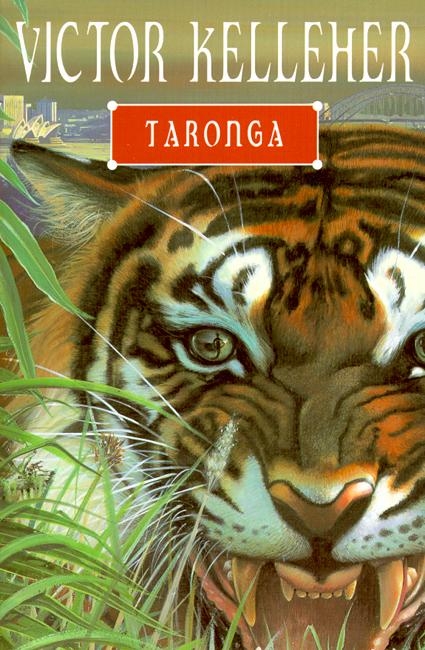
Sophie Masson divides her time between France and Australia and delves into the Grimm’s fairytale type world.
These books tend to have toys, animals, family rather than the high fantasy swords and sorcery. They include what matters to a younger child: home, play, toys. Narnia is basically the kids trying to understand the world. Also Winnie the Pooh and the little woodland spirits of Mae Gibbs, Blinky Bill. E.B. White wrote about animals (e.g. Charlotte’s Web) and toys.
Anna Fienberg’s Tashi books are based on old folklore from Europe, and the Tashi series is about a cat. They are a brilliant bridge from the picturebook first reader where the picture does most of the work, to the full-text type of novel. They’re not quite comics with text but every page has illustration, usually black and white, and is done in a sort of comic frame (though with no line) and three or four sentences to a page.
So many movies fill this area of storytelling: Flushed Away, Toy Story, A Bug’s Life. [Beagley loves Flushed Away and spends some time talking about it, but I don’t like at all.]
Older reader movies: Pan’s Labyrinth, Jim Henson’s Storyteller series, using muppet-like characters to tell Grimm (and plain old grim) fairytales. These tales are very dark.
Some recent adult movies Mirror Mirror, Red Riding Hood, Tim Burton’s Alice in Wonderland are very much adult takes on these tales.
The key to any evaluation of a particular genre, regardless of genre and subject matter: Is it good literature? Is it good writing? Does it extend the readers? Does it draw them in? Is it a good intellectual and creative product? How believable is the secondary world? Does the fantasy therefore encourage you to say, ‘Oh no, this is ridiculous?’ or are you intrigued? How effective is the opening? Are you encouraged to read on and forget that this is a made-up world? Is the story consistent? Is magic used to get out of plot holes, or is it used more as an embellishment? Does the fantasy world make you look afresh at your own world?
It is very easy to write cliched work. What has the author done to make their fantasy fresh and intriguing to draw you in? Cliche isn’t necessarily a bad thing. Young readers will read the same style of book over and over again. Young readers can be delighted to have 27 stories in the same series, even if it’s basically the same story each time.
Literary elements: What aspects of literature helps us determine good fantasy from the bad?
Character: Can you picture the main character straight away? Do you get a full view or is the character one-dimensional?
Setting: Especially in medieval stories, it’s easy to simply get facts wrong. Do you have a sense of the light? (The Australian light is very different from the light in a tropical forest.)
Plot: Do you know what happens? Are you able to figure things out from the details given? How does it end? (A lot of people don’t like the ending of Harry Potter, but endings are hard.) What causes the problem to emerge, what happens?
Who are we listening to? An external narrator, or through the eyes of characters? An issue with long series is that the reader is now more familiar with the world than the characters in it, so the reader will pick out inconsistencies easily.
Terry Pratchett’s series are humorous and satirical. He picks on the cliches and makes fun of everyday life. For example, he looks at the postal service, looking at the issue of lost mail.
Related
10 stories where technology is indistinguishable from magic from io9
Fantasy is the metaphor through which we discover ourselves.
Susan Cooper
“I think a lot about the fact that, for most of the history of literature that we know about, most literature was fantasy. Up through Shakespeare, it was not looked askance upon to have witches and magic and spirits in your stuff. The more time I spend reading and writing fantasy, the more perverse it seems to me that fiction has to pretend to act like the real world and obey the laws of thermodynamics.”
Forget why fantasy matters. Why does realism matter? from io9
Four Techniques To Mix Fantasy With Realism from The Write Practice
In some ways, kids like things to be right. Here is a video of a four-year-old girl complaining that the picture of a toy dinosaur is anatomically incorrect. (I’d like to see her do some work with Barbie.) In other ways, kids love to be drawn into fantastic worlds. Picturebook creators tread a fine line between the two expectations.
William Morris and the Idea of Community: Romance, History and Propaganda, 1880-1914
Elizabeth and John talk about fantasy’s power of world-making with Edinburgh professor Anna Vaninskaya, author of William Morris and the Idea of Community: Romance, History and Propaganda, 1880-1914 (2010) and Fantasies of Time and Death: Dunsany, Eddison, Tolkien (2020). Anna uncovers the melancholy sense of displacement and loss running through Tolkien, and links his notion of “subcreation” to an often concealed theological vision. Not allegory but “application” is praised as a way of reading fantasy.
John asks about hopeful visions of the radical politics of fantasy (Le Guin, but also Graeber and Wengrow’s recent work); Elizabeth stresses that fantasy’s appeal is at once childish and childlike. E. Nesbit surfaces, as she tends to in RtB conversations. The question of film TV and other visual modes comes up: is textual fantasy on the way out?
Mentioned in the Episode:
- David Graeber and David Wengrow, The Dawn of Everything.
- In “From Elfland to Poughkeepsie” Ursula Le Guin perhaps surprisingly praises the otherworldly prose style of Anna’s beloved E. R. Eddison, best known for The Worm Ouroboros (1922)
- J. R. R. Tolkien, “On Fairy Stories“
- E. Nesbit The Phoenix and the Carpet
- Lord Dunsany, King of Elfland’s Daughter
- Ursula Le Guin The Books of Earthsea
Recallable Books:
New Books Network
- Sylvia Townsend Warner, Kingdoms of Elfin (and read this lovely Ivan Kreilkamp article on her earlier strange great Lolly Willowes)
- Lloyd Alexander Chronicles of Prydain
- N. K. Jemisin, The Fifth Season
